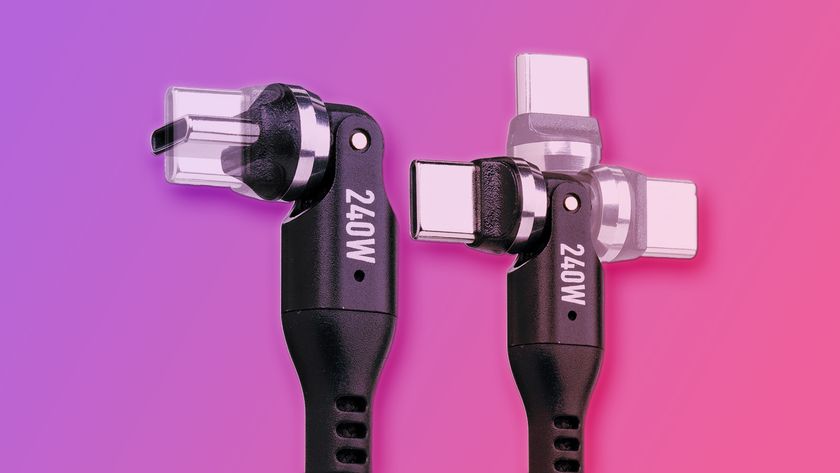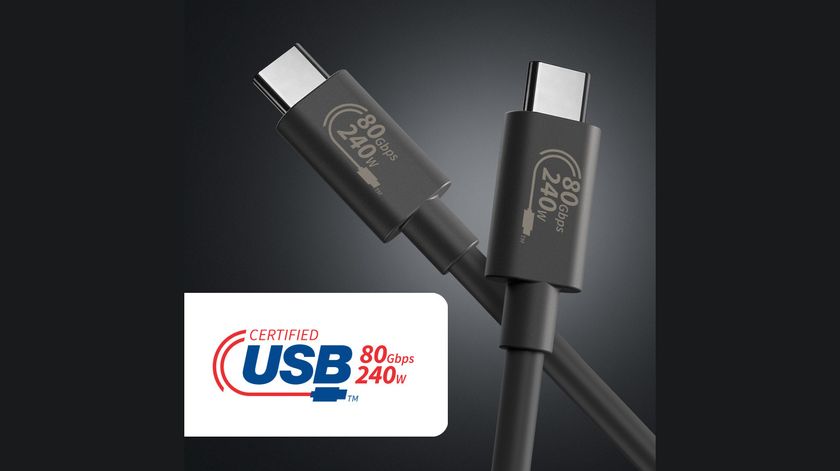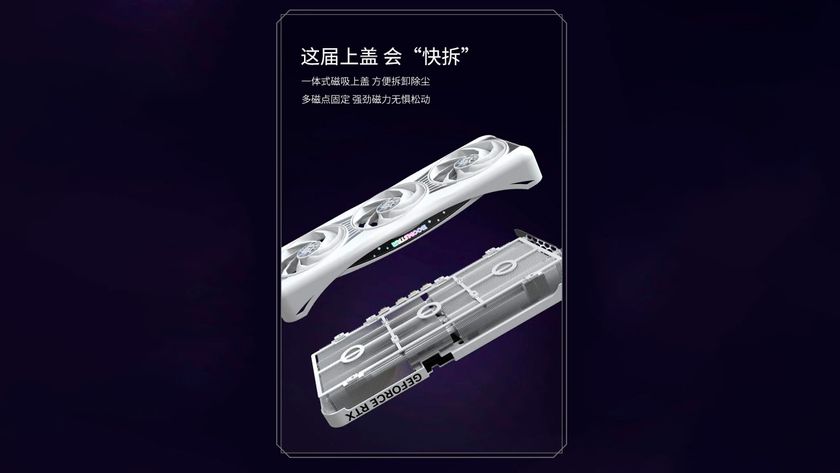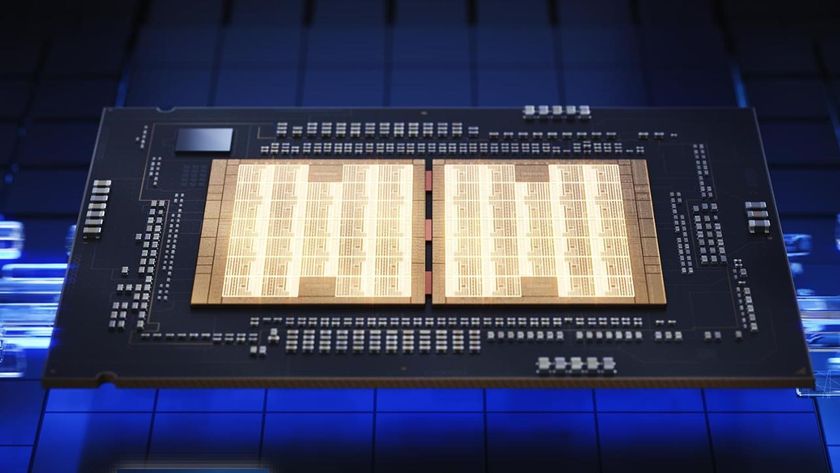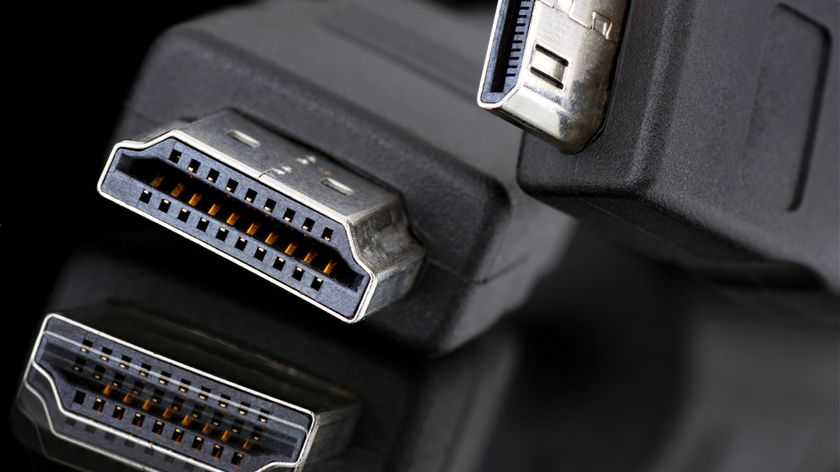ABCSell AR-18 USB Power Adapter Tear-Down: Another Death Trap
Stepping Up To Slightly Bigger Generic Adapters
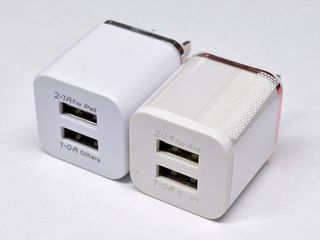
We’ve seen a few A1265 look-alikes already, and they've all been fairly horrible. Before we resign ourselves to touring another throw-away adapter, let's have a look at a slightly larger one that should, in theory, have more internal room for better isolation. Today we're digging into ABCSell’s $2.25 AR-18, on the left. Will it fare any better than the miserable failures that precede it?
Packaging
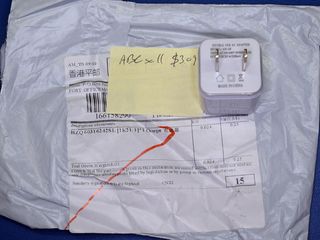
Like most other small items drop-shipping from China, this adapter made the journey in a generic plastic bag. According to its customs declaration, the shipper values the adapter at $0.25. That figure may very well be closer to its true worth than the $3.09 (CAN) I paid. Hopefully, I'm proven wrong.
Size Comparison
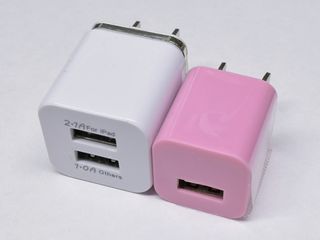
At three millimeters (1/8”) wider and four millimeters deeper than the A1265’s form factor, this slightly larger adapter style is actually about 40% bigger by volume. That’s quite a bit more than what I would have estimated at first glance. By weight, it is 20g versus 16g, mostly due to the extra plastic.
Shell Exterior
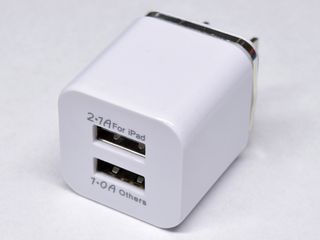
Up front, we find two ports instead of one, courtesy of the extra space afforded by a taller enclosure. One of them is marked “2.1A For iPad,” while the other is marked “1.0A Others.” In all likelihood, both ports are connected to the same 5V rail and there is nothing device-specific to either port.
Near the back, a silvery plastic band covers the holes holding the snap-in prong cap.
Label
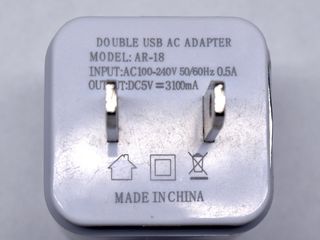
What do we get on the label? Exactly what I would expect from a $3 adapter: no safety marks, no brand, and almost assuredly unrealistic ratings. If I had to guess at this device's chance of satisfying its 3100mA output rating on a scale from 0 to 10, I'd give it a zero. Based on how every generic 1A adapter has struggled to supply more than 600mA without either self-destructing or cutting out, it would be surprising to get even 2A out of this one.
Cracking Open
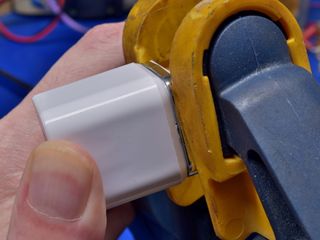
Prying the plug cap away from the rest of the housing far enough to insert other tools requires considerable force. Once the first wedge is successfully inserted, running a second one around the perimeter completes the job with moderate added effort.
Stay On the Cutting Edge: Get the Tom's Hardware Newsletter
Get Tom's Hardware's best news and in-depth reviews, straight to your inbox.
First Glimpse
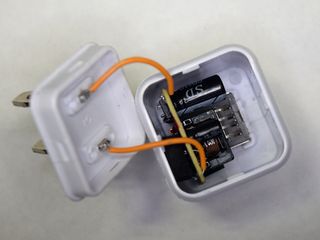
With the cap popped off from the main body, you can see four tabs and matching slots securing it to the enclosure. Similar to all of the other generic adapters, the AC prongs connect to the circuit board using wires soldered directly to the prongs. But unlike the A1265 look-alikes, this one crams everything on a single circuit board, eliminating the need for a board-to-board ribbon cable.
Board Top
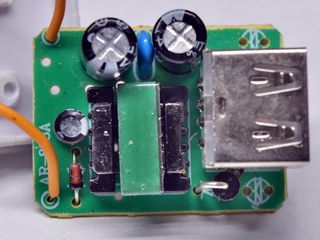
There's not much to see up top, aside from an SD-branded 400V 3.3µF primary capacitor that'd barely be adequate in a 1A adapter, a 470µF 10V United output electrolytic, a 3.3µF 50V feedback cap, a pair of through-hole diodes, the transformer, and the USB ports’ shield. The input filter capacitor is located right next to the output filter capacitor, with a tiny blue 1nF 1kV non-Y-rated capacitor in-between.
We’re just getting started and this thing already falls into don't buy, don't use territory.
This Doesn’t Look Right
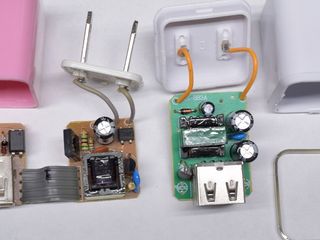
Something doesn’t look right in this picture. The pink A1265 on the left could barely handle 600mA. Meanwhile, the AR-18 on the right claims to be capable of 3.1A using a transformer with an even smaller core size. The AR-18’s core only looks bigger because its terminals are on the coil form outside the core’s footprint, while the A1265’s coil form has its terminals tucked underneath.
Unless the AR-18 is operating at a much higher frequency using a higher-quality ferrite core, this adapter has no chance of delivering 3.1A. Even 1.5A might be optimistic.
Crossing Wires

The wires going to coil form terminals aren’t double-isolated, and two wires are crossing each other on the primary side. Where have we seen that recipe for catastrophic failure before?
Deja Vu
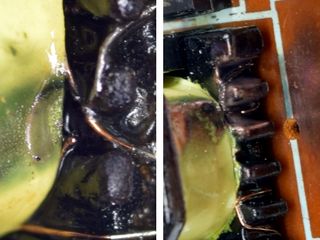
The last time we saw wires cross on the primary side was in my previous tear-down of A1265 look-alikes, ending with the two wires arcing to each other and spewing copper plasma all over their surroundings.
Will the AR-18 even survive normal testing, or will it share the same fate? Even if it survives testing, I wouldn’t hold my breath for long-term reliability.
-
dudmont Sauvageau, you've got a touch Doc Brown in you, don't you? "Now where am I going to find that 1.21 gigawatts?....."Reply -
chaz_music For me, the picture of the housing bottom side (plug view) is all that is needed. It does not have a UL or ETL mark on it. These are safety agency marks that certify that the device won't kill you. :)Reply
For Europe, you would also have a CE mark. I have found many power supply products in the past few years without UL or ETL on them. I won't use them if those marks are not there. That is because I am an engineer who has to make products that meet UL/ETL and CE. The requirements to meet these agency tests check for exactly the same thing that you showed in your tear down. And you did a great job!
Anything that connects to the utility or mains should have safety marks for your country.
- Charles -
wuethrichtech idk, i understand things in this world almost well enough to do tear downs like this...which is why i find myself torn. All the saftey features we would require if it were made here are left out and millions of these must be all around the world... where are the deaths? where are the fires that were not caught in time?Reply
yet having a decent understanding, If this sorta crap not only snuck by but was tolarted and produced here...id be extra woried about living in an apt where joe schmo the window licker is going to put one of these in every room and thinks he can rebuild his ebike battery with a pile of 18650s10w soldering iron and no bms -
Daniel Sauvageau Reply
If the adapter is the only thing nearby, it'll burn out, leave a scorched wall outlet and dry-wall, probably go unreported. If there are tons of things nearby and many of them are possible causes, then the fire will burn all of them beyond recognition and the exact cause may be left undetermined.20927821 said:All the saftey features we would require if it were made here are left out and millions of these must be all around the world... where are the deaths? where are the fires that were not caught in time?
For deaths by electrocution to occur, the user needs to provide a relatively low impedance to ground, which usually isn't the case when people are on dry ground and their phone is the only thing they are touching. Even a shock from 240Vac while wet and grounded isn't a guaranteed death, it'll definitely be painful well beyond anything that could be considered acceptable exposure. If you look for non-lethal shock reports, those are plentiful. Any of those could turn lethal under more unfortunate circumstances.
When all it takes to make things significantly safer is a tiny bit more care in the board layout, sufficiently wide insulation tape between transformer layers and some sleeving at least on the secondary, there really is no excuse for these death-trap grade adapters to exist. These things are accidents waiting to happen, only a matter of when and what the circumstances will be when they do. -
jdog2pt0 Could spend your whole life tearing apart this cheap crap, and if you like electronics tear downs (especially unsafe ones) check out Bigclive on youtube. Otherwise, my rule of thumb when buying chargers and the like is to....buy Anker and be done with it.Reply -
gasaraki Why don't you tear apart a name brand non-apple charger for once? Like an Anker Quick-charger or something. Or show us a name brand Samsung or LG charger. Tearing apart no name chargers are well and good but no one is going to buy those crap.Reply -
Daniel Sauvageau Reply
I've had at least three of those: SilverStone UC01, Aukey PA-U32, Philips SPS8038, four if you count the PrimeCabkes/iKits charging station / device organizer which is also miles ahead of generic adapters.20930057 said:Why don't you tear apart a name brand non-apple charger for once?
As for "nobody would buy those", I'm pretty much certain millions of these dangerous adapters are bought by unwary people every year, hence the importance of promoting awareness of how unsafe they can be. Both of my sisters have a couple "dollar store specials" which I'm planning to trade them for as I find adapters that meet my grade.
At the moment, Aukey's PA-U32 is at the top of my list, as does another device from a new name in this category, albeit after modding to fix what looks like an unfortunate design flaw in what otherwise appears to be a top-notch adapter. You'll see that last one in late-May.
As for seeing more Aukey or some Anker, Roger got me a pair of each. The first one's tear-down will likely be out in June. I meant to start working on it while dog-sitting at my sister's home but forgot to bring my other adapters, so that's on hold until the next time I drop by my apartment later this week. -
tproveau I have a two usb out 2.4A each outlet 4.8A total power adapter made by Ubiolabs that is a very big seller since it retails at Costco in the US. It is UL listed I.T.E. power supply, FCC and RoHS compliant. Model # is CHG1003 B/N 110116HJT. Input 100-240 volt~50/60Hz 0.7A. My question is it looks to be a safe unit considering the label but is it? The package comes with two five foot long USB to micro USB cables and sells for eight bucks. Why buy the unknown stuff from China when you can get this package locally so inexpensive? Also being so inexpensive is it up to what it appears to be?Reply
Thanks
